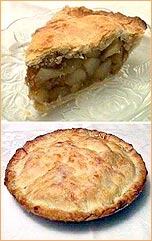Simple DC Motor DIY STEM Kit
$9.99$4.95
 Despite the temperatures being equal, your tongue is still more likely to get burned by the filling than the crust, though. There are 2 principles behind this: thermal conductivity and specific heat capacity.
Despite the temperatures being equal, your tongue is still more likely to get burned by the filling than the crust, though. There are 2 principles behind this: thermal conductivity and specific heat capacity.
 'Imagination disposes of everything; it creates beauty, justice, and happiness, which is everything in this world.'
'Imagination disposes of everything; it creates beauty, justice, and happiness, which is everything in this world.'